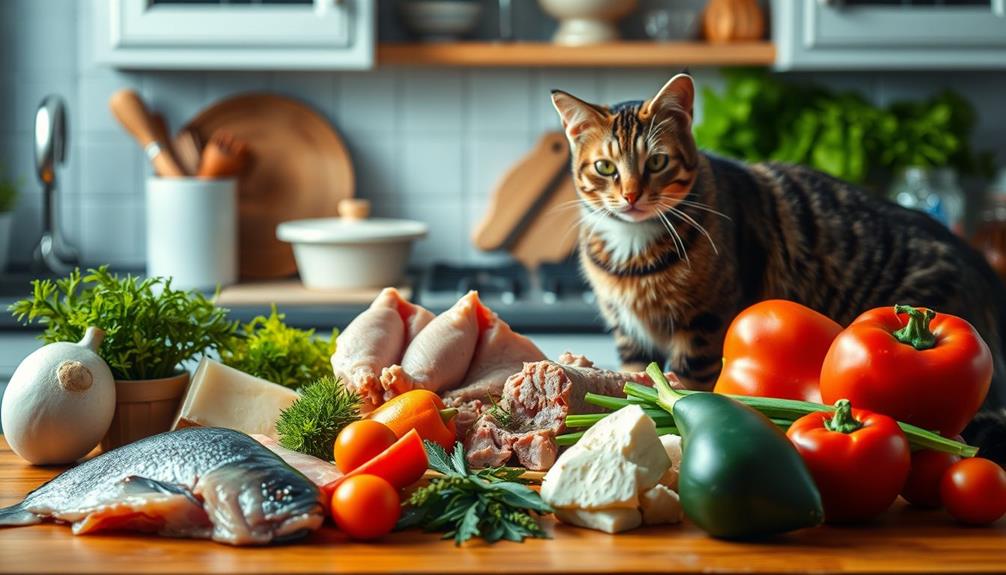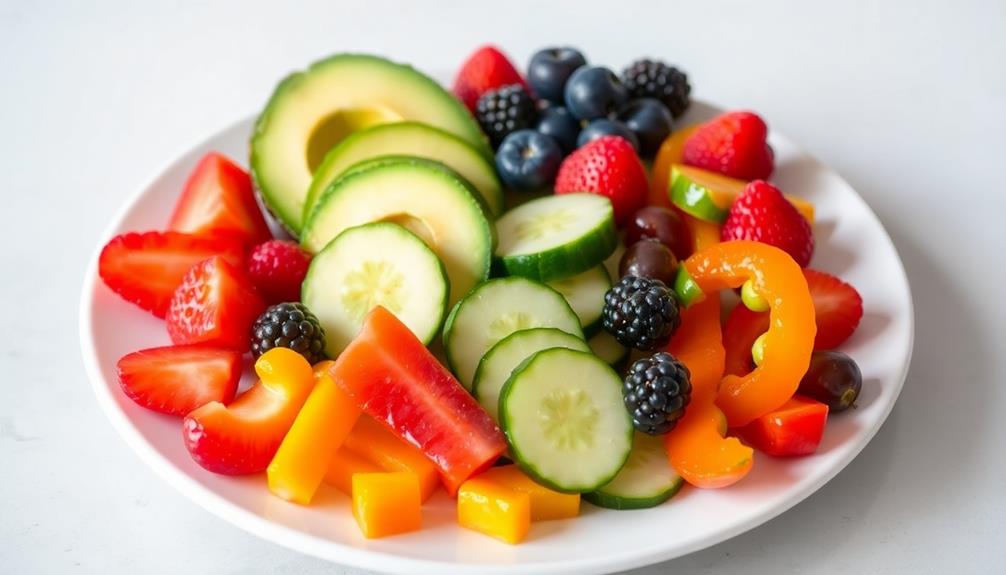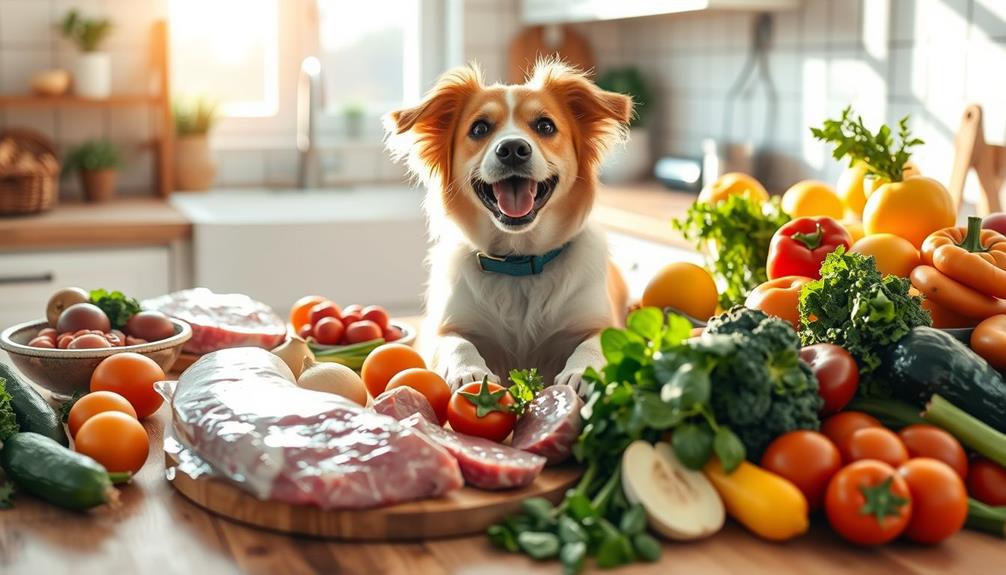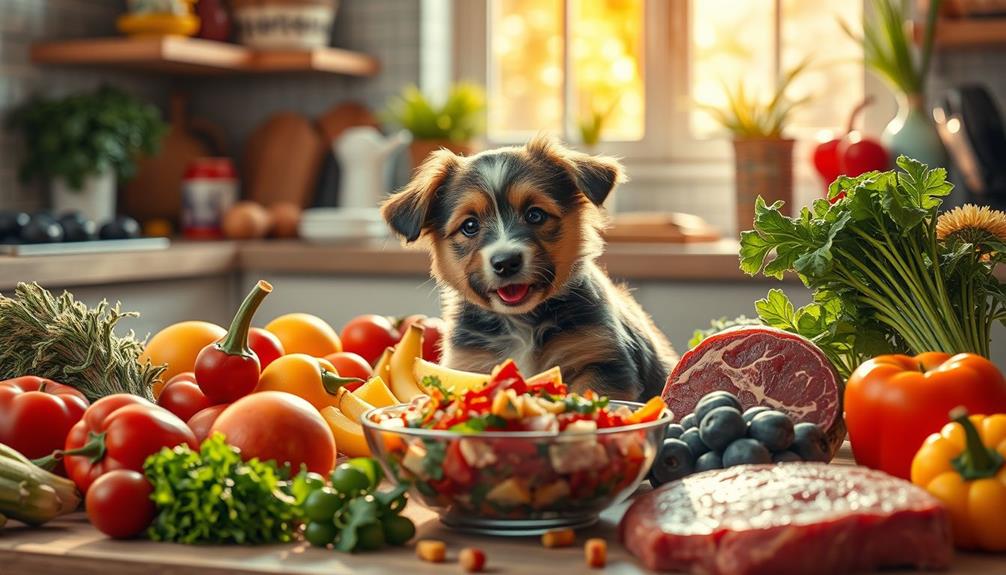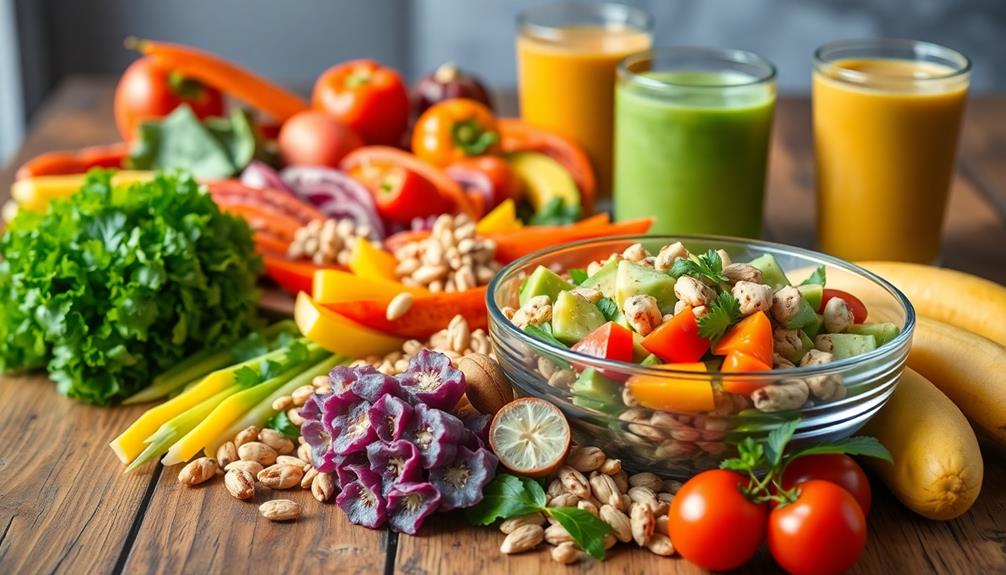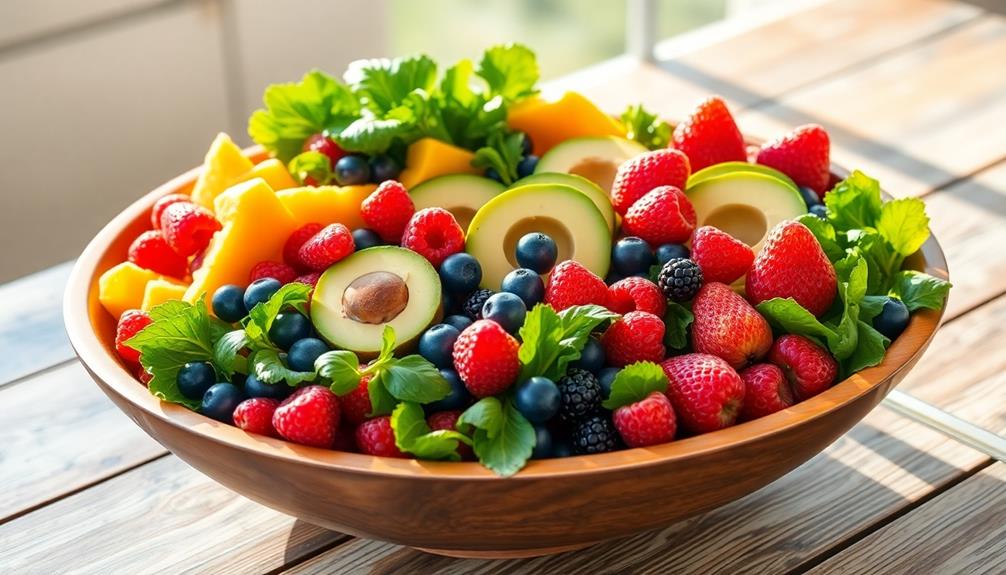To feed your cat a raw food diet, aim for daily portions of about 2% to 3% of their body weight, divided into two meals. If your cat is overweight or less active, reduce that to 1.5%. On the flip side, active or underweight cats might need closer to 3%. Regularly check your cat's weight to adjust the amount appropriately. Remember to consult a veterinarian before altering to raw food. It's crucial to monitor their response during the change, and you're only scratching the surface of what's important for their diet.
Key Takeaways
- Adult cats should receive 2%-2.5% of their body weight in raw food daily, split into two meals.
- Overweight cats may need a reduced intake of 1.5% of their body weight.
- Active or underweight cats should be fed approximately 3% of their body weight daily.
- Kittens require 10%-13% of their body weight until three months, decreasing to 3%-6% by 8-14 months.
- Regularly monitor your cat's weight and adjust feeding amounts as necessary.
Understanding Raw Food Basics
Understanding raw food for your cat starts with recognizing that they're obligate carnivores, meaning they thrive on a diet rich in animal protein. A raw food diet aims to mimic their natural intake, which includes small mammals, lizards, and insects. This diet provides high moisture content and essential nutrients like taurine, fundamental for your cat's overall health.
Proper nutrition is essential, similar to how hamster care involves a balanced diet, guaranteeing pets receive the necessary nutrients for their well-being.
When considering feeding raw food, you should aim to provide about 2% to 3% of your cat's current body weight daily. Splitting this amount into two meals can help guarantee your cat gets the right nutrients throughout the day. It's essential to choose appropriate protein sources, as not all raw foods offer the same benefits.
Before altering to a raw food diet, consult a veterinarian to discuss your cat's specific health needs. This step is especially important if your cat has any pre-existing health issues or unique dietary requirements.
Benefits of Feeding Raw

Feeding your cat a raw diet offers numerous benefits that can enhance their overall health and well-being. Many cat owners notice a remarkable difference in their pets after shifting to raw feeding. Here are some key benefits of raw:
1. Healthier Skin and Coat: A raw diet can lead to improved skin and coat quality, reducing shedding and promoting a shiny appearance.
Additionally, the natural ingredients in raw food may provide antioxidants that support overall health, similar to the benefits observed with Cranberry Juice Consumption.
2. Enhanced Dental Health: The natural chewing of raw food and bones helps clean your cat's teeth, lowering the risk of periodontal disease.
3. Increased Energy Levels: Cats on a raw diet often show higher energy levels and liveliness, contributing to an improved quality of life.
4. Reduced Litter Box Odor: Switching to raw can greatly reduce both the odor and volume of litter box waste, making it easier for you to manage.
Adopting a raw food diet may also help combat obesity, helping your cat achieve and maintain an ideal weight.
Portion Guidelines for Cats
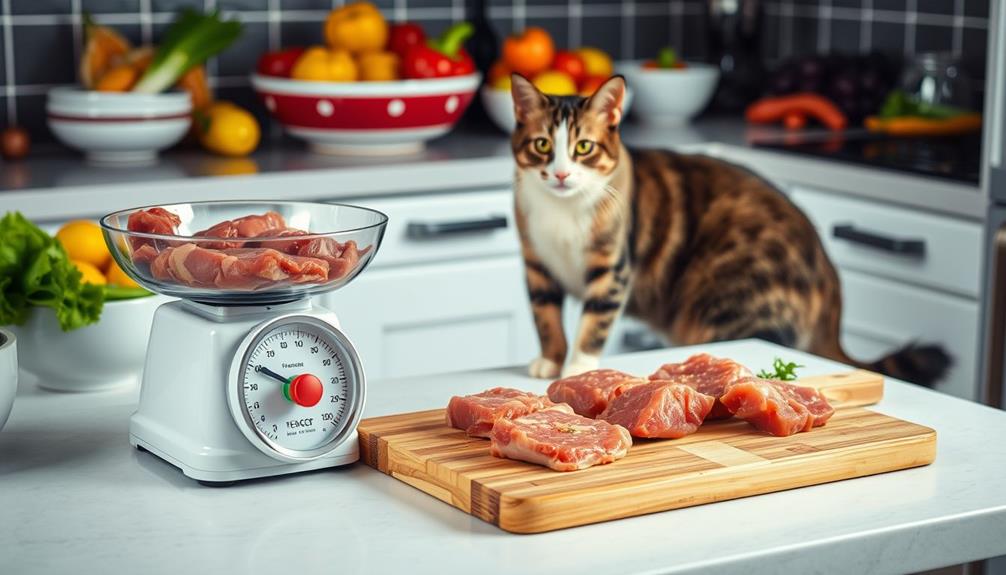
When it comes to portioning raw food for your cat, getting the right amounts is vital for their health. For adult cats, aim to feed approximately 2%-2.5% of their current body weight in raw food each day, divided into two meals. This helps maintain a healthy weight and supports overall well-being.
If you're also considering healthy snacks for your pet, incorporating natural ingredients for overall health can be advantageous. If your cat is overweight or less active, consider reducing their intake to about 1.5% of their body weight daily to assist with weight management.
For active or underweight cats, you'll want to increase their portion to about 3% of their body weight daily. This guarantees they receive the necessary energy levels to thrive. It's essential to monitor weight regularly and adjust the feeding amounts as needed.
Keep in mind that kittens require considerably more food, typically 10%-13% of their body weight until they're three months old, gradually decreasing to 3%-6% by 8-14 months.
Transitioning to Raw Diet
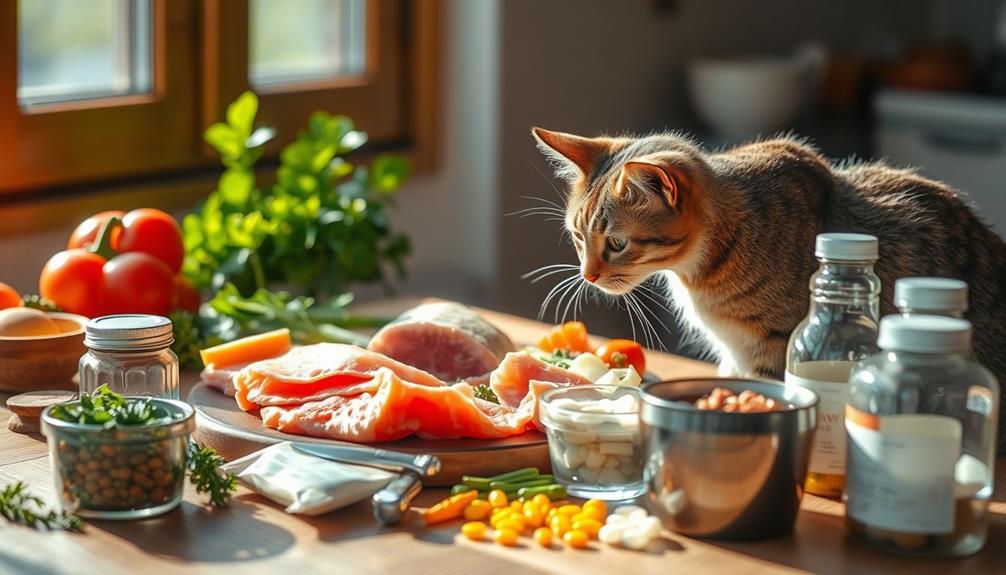
Shifting to a raw diet can be an exciting change for both you and your cat, but it requires careful planning to guarantee a smooth adjustment. Moving to raw food involves a gradual process to avoid digestive upset. Here are some essential steps to follow:
1. Consult Your Veterinarian: Always check with a vet before changing your cat's diet to confirm it aligns with their health needs.
Additionally, it may be beneficial to understand the importance of budgeting for pet care when making dietary changes, as raw food can sometimes be more expensive than conventional options.
2. Gradual Adjustment: Over about a week, decrease the amount of old food while increasing the raw food. Aim for about 2-3% of your cat's body weight in raw food each day, split into two meals.
3. Small Portions: Start with small amounts of raw food to help your cat adjust to the new diet.
4. Encourage Interest: Use wide dishes for easy access to meals and sprinkle some treats to make the raw food more enticing.
Safe Handling Practices
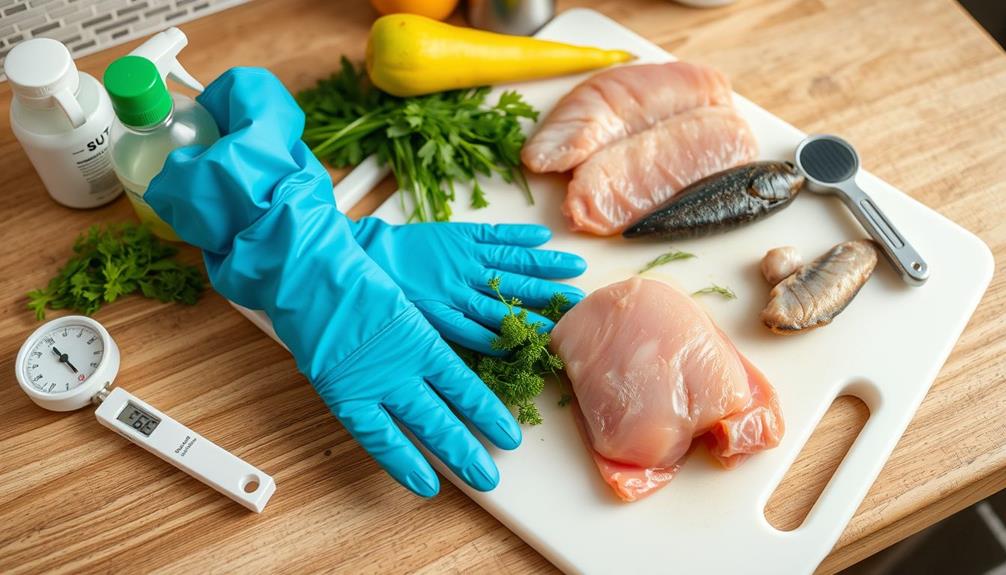
Maintaining safe handling practices is essential when preparing raw food for your cat. First, always wash your hands thoroughly with soap and water after handling raw meat. This simple act prevents the spread of harmful bacteria. You should also clean all surfaces, utensils, and feeding dishes with hot, soapy water right after you're done to avoid cross-contamination.
| Action | Importance | Tips |
|---|---|---|
| Wash Hands | Prevents bacteria spread | Use soap and water for at least 20 seconds |
| Clean Surfaces | Avoids cross-contamination | Hot, soapy water is your best friend |
| Thaw Raw Food | Guarantees safety and freshness | Always thaw in the fridge, not in the microwave |
When you thaw raw food, do it in the refrigerator and consume it within four days. Any uneaten food after this period should be discarded to keep your cat safe. Using disposable gloves while preparing raw food can help maintain hygiene and minimize direct contact. By following these practices, you guarantee your cat stays healthy and happy!
Frequently Asked Questions
How Do You Calculate Raw Food for Cats?
To calculate raw food for your cat, multiply its weight in pounds by 0.02, 0.025, or 0.03 based on activity level. This gives you the daily food requirement in pounds for proper nutrition.
What Is the Ratio for Raw Cat Food?
Did you know that active cats can require up to 3% of their body weight in raw food daily? For most cats, a general ratio of 2-3% works best, split into two meals. Adjust as needed!
How to Balance a Raw Diet for Cats?
To balance a raw diet for your cat, mix 70-80% muscle meat, 10-15% organs, and 5-10% raw bones. Rotate protein sources and adjust portions based on your cat's needs and activity level.
How Many 3 Oz Cans of Cat Food Should I Feed My Cat per Day?
Think of your cat's meals as little treasure chests. For a 10-pound cat, you'll want to serve about 1.5 to 3 cans of 3 oz food daily, adjusting based on their weight and activity level.
Conclusion
By embracing a raw food diet for your cat, you're not just feeding them; you're nurturing their instincts and health. Remember, balance is key—too little or too much can tip the scales. As you shift, think of it as planting a seed; with care and patience, it'll grow into a thriving relationship with your feline friend. Keep those safe handling practices in mind, and you'll guarantee a happy, healthy cat that thrives on nature's bounty.

